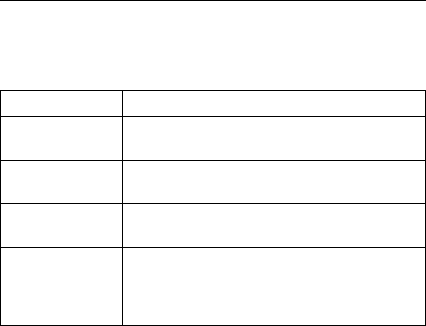
Removing PCMCIA Cards
After removing the PCMCIA cover, and filler plug if it is
installed, you can insert or remove PCMCIA cards during
most computer operations.
To insert a PCMCIA card, perform the following steps:
1. Insert the PCMCIA card into one of the available
slots, with the long row of pin sockets facing the
computer and the label on the PCMCIA card facing
up. When the card is in place, the blue eject button
at the left of the slot pops out. Do not force the card.
If the card does not fit into the slot, turn it over.
Note: A Type III PCMCIA card occupies both
PCMCIA slots. To insert the card, aim its bottom
ridges at the lower PCMCIA card slot.
2. Replace the outer cover over the PCMCIA slots.
To remove a PCMCIA card, perform the following steps:
1. Use a small pointed object such as the point of a pen
to press the blue eject button located to the left of the
PCMCIA card slot.
Note: A Type III PCMCIA card occupies both
PCMCIA slots. To remove the card, press the bottom
eject button.
2. Carefully slide the PCMCIA card out of the slot.
3. If both PCMCIA slots are empty, replace the filler plug
and replace the outer cover over the PCMCIA slots.
Note: Do not remove PCMCIA cards while the system is
in Suspend or Hibernate mode. If you remove a PCMCIA
card while the system is in either mode, you might lose
configuration information. Or, if you remove a PCMCIA
card and insert another card, your system might not
recognize the new card.
Product Overview
The following table provides a brief overview of the system
features.
Feature Description
Processor Intel** 486** DX2 25/50MHz or DX4
25/75MHz, with math coprocessor.
Memory
(Standard)
4MB or 8MB (on the system board).
Memory
(Optional)
4, 8, or 16MB SO-DIMM.
Bus
Architecture
(Two Busses)
Local bus for hard drive and video
(with hardware line draw, BITBLT,
cursor, and sprite support).
ISA bus
ThinkPad 701C/701CS (2630) 159


















